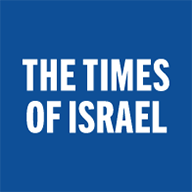As of June, the International Atomic Energy Agency said Iran had over 1,500 kilograms (3,300 pounds) of low-enriched uranium. The 2015 accord limited Iran to having only 300 kilograms (661 pounds) of uranium enriched to only 3.67%, far below weapons-grade levels of 90%.
Now at 1,500 kilograms, Iran has enough material for a single nuclear weapon if it decides to pursue one. However, that stockpile still is far less than in the days before the 2015 deal, when Tehran had enough for over a dozen bombs and chose not to weaponize its stockpile.
Iran would also need to further enrich that uranium, which would draw the attention of international inspectors still able to access its atomic facilities. And it would still need to build a bomb. But the “breakout time” Iran would require to assemble a weapon — estimated to be at least a year under the 2015 deal — has narrowed.
All this comes after a series of incidents last year culminated in a US drone strike that killed a top Iranian general in Baghdad in January, followed by a retaliatory Iranian ballistic missile attack targeting American troops in Iraq. Those tensions remain even today as the coronavirus pandemic engulfs both the US and Iran.
Iran has already signaled willingness to use its nuclear program as a lever as a longstanding United Nations arms embargo on Tehran is set to expire in October. That ban has barred Iran since 2010 from buying major foreign weapon systems such as fighter jets and tanks.
Iran has threatened to expel IAEA inspectors and withdraw from the Nuclear Nonproliferation Treaty amid the US pressure campaign. North Korea, which now has nuclear weapons, is the only country to ever withdraw from the treaty.
Expelling IAEA inspectors and potentially shutting down their cameras now watching Iranian nuclear facilities would blind them from being able to see if Iran pushes its uranium enrichment closer to weapons-grade levels. But that also could see Iran alienate China and Russia, which have both urged all parties to remain in the nuclear deal.
The US hopes to extend the embargo, calling Iranian threats over it being renewed a “mafia tactic.” But Washington has issued its own threats, claiming it could invoke the “snapback” of all UN sanctions on Iran that were eased under nuclear deal unless the embargo is prolonged — despite having left the atomic accord.
As Trump campaigns ahead of a November election, he may be more willing to take those risks to highlight that he followed through on his 2016 campaign promise to pull out of the Iran nuclear deal and take a harder line on Tehran.
The Islamic Republic in turn may be more willing to take risks as well.
“The US diplomatic campaign, as well as suspected Israeli sabotage and continued attacks on US forces in Iraq, will raise overall tension with Iran and introduce new uncertainty into the calculations of the Iranian leadership,” the Eurasia Group warned in an analysis on Tuesday. “That could induce Iran to take more risky action in the nuclear realm, or retaliate for … snapback in Iraq or the region.”

